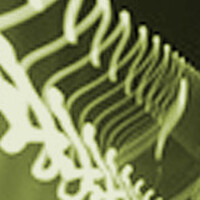Reflection on a discussion
Blog post
By Dong Xianliang Yan
This is a reflection on a discussion I had with Chris and Tom last Friday, sparked by a conversation about the notion of “cutting-edge” and the imagination behind its etymology.
When the word “edge” first came to mind, it wasn’t a solitary concept—it came with the ubiquitous term “cutting-edge,” which Chris mentioned in the programme statement this year as well, a phrase I often encountered in academia. Academic journals and conferences frequently describe themselves as promoting “cutting-edge” research, supposedly at the forefront of innovation. Yet, I have always felt uneasy about this usage. The term is often used extravagantly, perhaps even abusively, creating pressure and a sense of inadequacy. It can feel overwhelming to be expected to contribute to “systematic innovation,” especially when the direction is unclear or when working within diverse, loosely defined platforms that don’t follow conventional structures.
In terms of technical and scientific language, “cutting edge” takes on a specific role. According to the Oxford English Dictionary, the term was first used in the 16th century to refer to the sharp edge of a tool, such as the blade of a knife or the reinforced edge of a shovel. Its contemporary use points to “the newest or most advanced stage in the development of something; the forefront of innovation in a field,” a meaning deeply embedded in technological competition and advancement.
It is inspiring for me to look back at the records of past editions of ArtCross (https://rescen.net/artscross/artscross-memories-academics/), I found that the most “cutting-edge” aspect of this platform, at least for performance studies, was not rooted in technological novelty, but rather in its collaborative interaction structures (If you search the terms of “cutting-edge” and “dance studies” together, the results would be those examples indicating advanced use of technology employed in choreography). These are spaces where people with diverse cultural backgrounds and positions come together, creating shared meaning through embodied practice.
As Martin Welton reflected, both he and Chris, at the very beginning, were aware of the potential differences among participants, differences in language, culture, and academic norms, and made a conscious effort to accommodate these differences. The open, side-by-side observational space created for scholars was not just inclusive but also transformative, encouraging us to reframe our assumptions and perceptions throughout the process. This, as both Yan Tong and Emily Wilcox have reflected in previous editions, marks a unique and vital experiment in ArtCross’s history.
Looking at its evolving structure, I wonder about ArtCross’ structure in increasingly dynamic cultural environments and with more dramaturgical awareness. Two realities seem clear: First, ArtCross participants come from more diverse backgrounds, Chinese dancers are trained in the UK, Hong Kong (or overseas), and their movement practices are no longer rooted in a single discipline. Choreographers bring their educational and cultural backgrounds into the studio. Second, scholars play a more active role in participating in dance-making, often as dramaturgs, a role that was far less common a decade ago.
Can we imagine even more intimate forms of interaction during ArtCross? Beyond the aesthetic lens, how might we attend to the care of dancers, both physically and mentally, during intensive rehearsal schedules? This would echo Chao’s sociological interest in working environments within studios. Could we also find lost information during the development process because scholars did not attend the first week rehearsals, something that Tom, Lynn, and others have shown great interest in during our discussions?
These questions might not point to “cutting-edge” innovation in the pressure sense, but they do signal a thoughtful, even “sharp” approach because it is related to a systematic structural issue paradoxically.



Posted by

Andrew Lang

